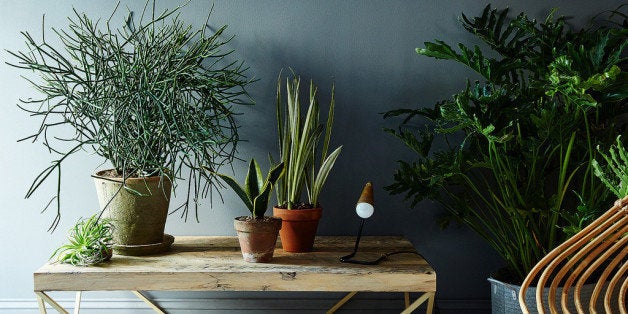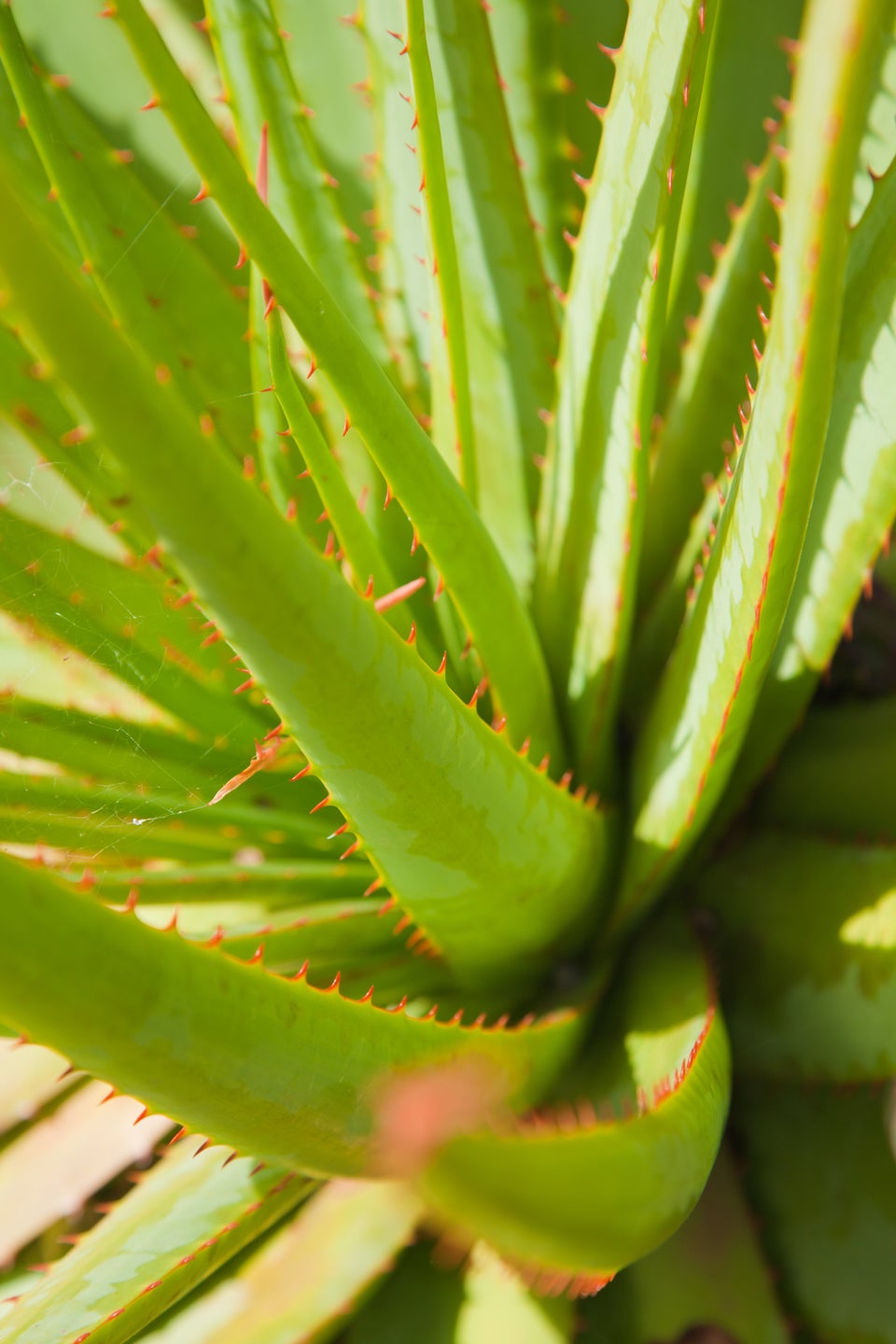
Whether you can never remember to water your plants or you have a tendency to smother them with love, Tara Heibel from Sprout Home has the house plant you need to get your (indoor) garden growing.
A recurring request that we hear at Sprout Home is: "Can you give me a plant that I can't kill?" While it is possible to kill any plant, as each is a living thing, there are some that can be a little harder to kill than others. Each person has a slightly different definition of "no-kill," but some plants can deal with more havoc than others, whether an overdose of love (that is, water) or almost complete neglect.
Here are some of my favorite plants that might just fit the "no-kill" bill:
1. Sansevieria
First off is Sansevieria, which is commonly known as mother-in-law's-tongue -- or better yet, devil's tongue. Yes, this plant is truly as tough as it sounds. It's great for a lower light environment and where neglect is prevalent. The thick succulent-like leaves store water in order to survive in dry regions, and that makes these plants perfect for those who go out of town frequently or forget that they own plants -- the devil's tongue can handle dry soil for quite some time. In fact, it's more dangerous to over-water them, as they can get root rot and die from too much love. Sansevieria is also great for tight spaces where you need vertical rather than horizontal growth. Even with all the neglect, these tough guys continually give back. Not only are they visually appealing, but they are great air purifiers, releasing oxygen at night. Win, win.
2. Euphorbia tirucalli
If you are that person who is blinded by the amount of sun you have, I would suggest a Euphorbia tirucalli, or pencil cactus. This awkward beast is normally found in environments not suited for anything else -- they can survive almost any amount of abandonment. Sculptural in form, the pencil cactus can be pruned to the will of its caretaker, but be careful, as its milky latex can irritate your skin and eyes. Its seething visual reproach is not a typical beauty, but I am more than happy for that -- the pencil cactus always makes me smile.
3. Cyperus
Do you have a container that has no drainage -- one where you continually drown every plant you put in it? I know, you worry about them and pay a little too much attention to them and think that more is better? For those of you that are heavy-handed with the watering can, you should check out the mighty-yet-delicate-looking Cyperus. These mostly aquatic plants like the wet feet you want to give them. Cyperus is a very large genus of plants, so you'll be able to find the right one for your lighting and container type. The most ornamental Cyperus are the umbrella papyrus and dwarf umbrella. Without too much fear of permanent damage, you can water them to the point where you see liquid pool on the top of the soil, or you can let them dry out a little bit. If you take the dry-time to extremes and the fronds turn brown and crispy, simply cut off the dried parts and let the plant send out new shoots from the soil. I have had the same Cyperus in the same container for five years now, and every time after I have (of course not purposely) neglected it, I am surprised by how well it bounces back.
4. Tillandsia
Or perhaps you do not want to deal with the dirt and the grime of soil. You want to reap the benefits of living flora but are a little bit of clean freak. Tillandsia, or airplants, are your ideal plant counterpart. They require no soil, as they take in nutrients or water through their bodies, not their roots. They'll be no messing with dirty potting stations or soil all over your floors if you need to re-pot. There is some care needed, however, to mimic the humidity of their native habitat. In Chicago, for example, we soak them in water for a half hour every seven to ten days and let them dry out for a couple of hours afterwards. If your plants need to be watered between soaks, you can mist them lightly with a spray bottle. Try using them with containers that normally would not provide adequate depth for planting. Use a bed of dried moss for texture, or place them out in the open with no bells and whistles.
5. Monstera deliciosa
Perhaps you want bigger leaves in order to give your home that tropical paradise you crave yet the thought of something that lush and large seems overwhelming. You want a maintenance schedule to help guide you, something to put into the calendar on you phone. Meet the Monstera deliciosa, commonly known as the split-leaf philodendron. A monster indeed, its huge leaves can stop you in your tracks. These guys are easy to take care of and also a great bang for your buck. Their soil can handle going slightly dry to the touch, and if the plant goes through stress for any reason, its leaves will normally tell you by changing color and texture prior before they drop, which will help you prevent an ugly naked period. Don't be scared, grab a Mai Tai, and relax.
Which house plants have you had the best luck with? Share with us in the comments below, or Instagram a photo of your favorite plant and tag it with #f52home!
Photos by James Ransom
More From Food52:
How to Make a Terrarium (And Keep It Alive)
Setting Up Your Own Container Garden for Small Spaces
How to Grow An Indoor Kitchen Garden
DIY a Gorgeous Spring Flower Arrangement
The History of Rooftop Gardens
Food52 is a community for people who love food and cooking. Follow them at Food52.com -- and check out their kitchen and home shop, here.
Also on HuffPost:
